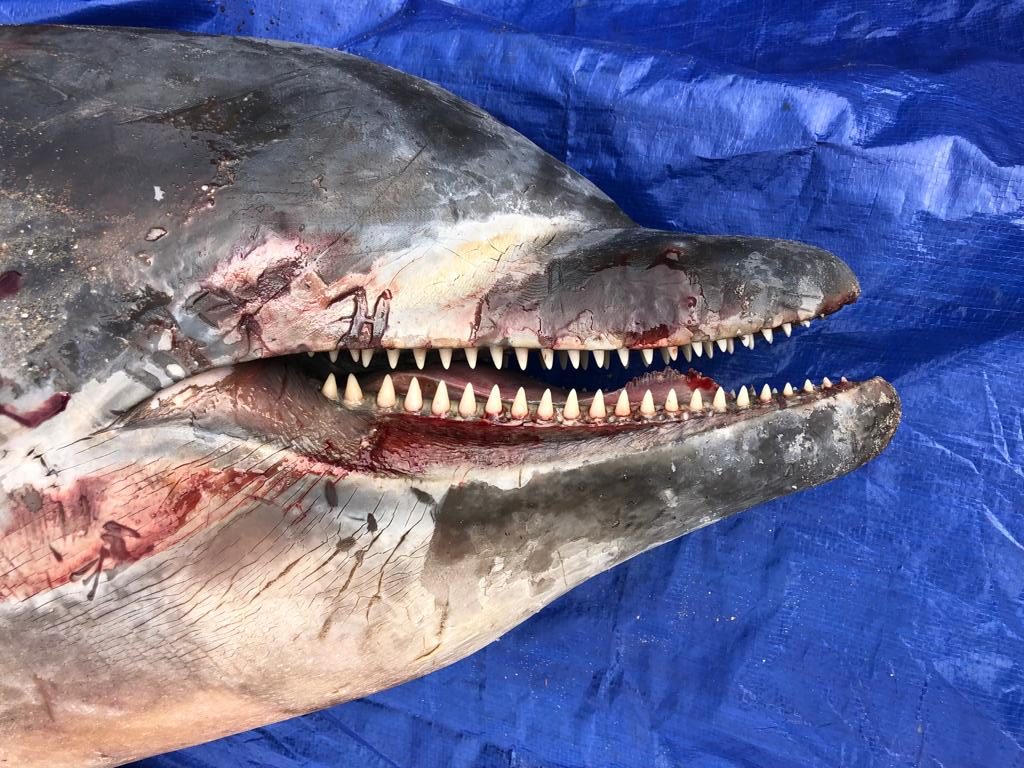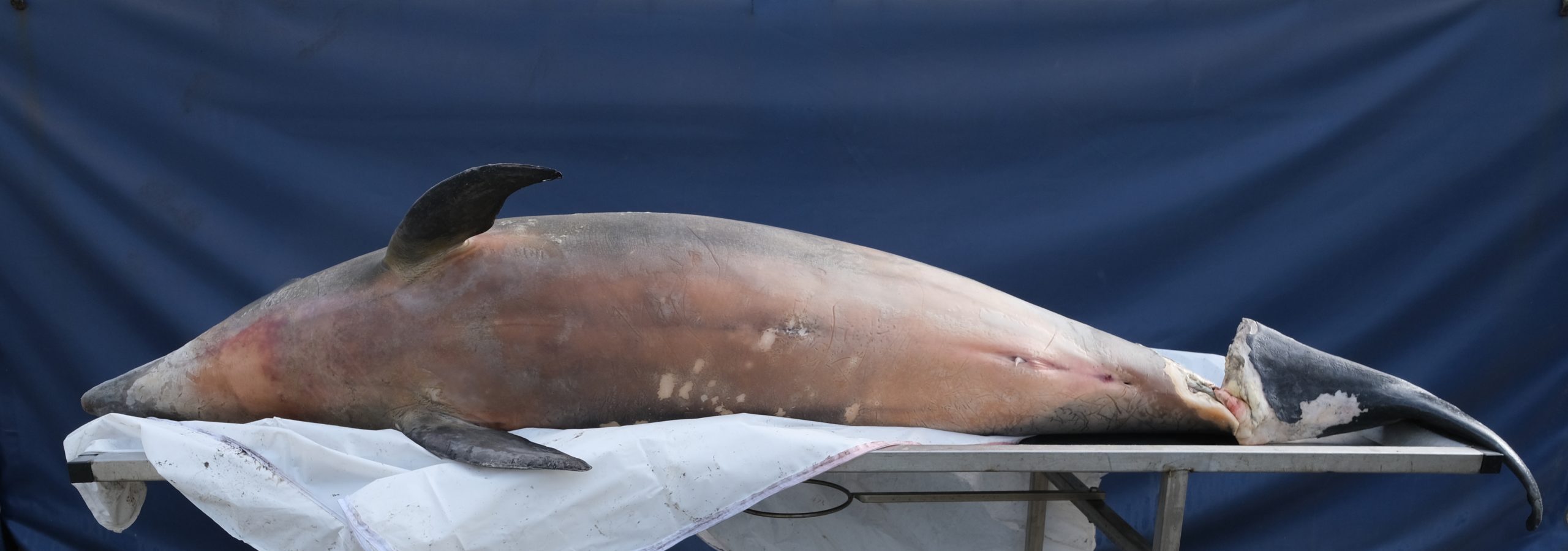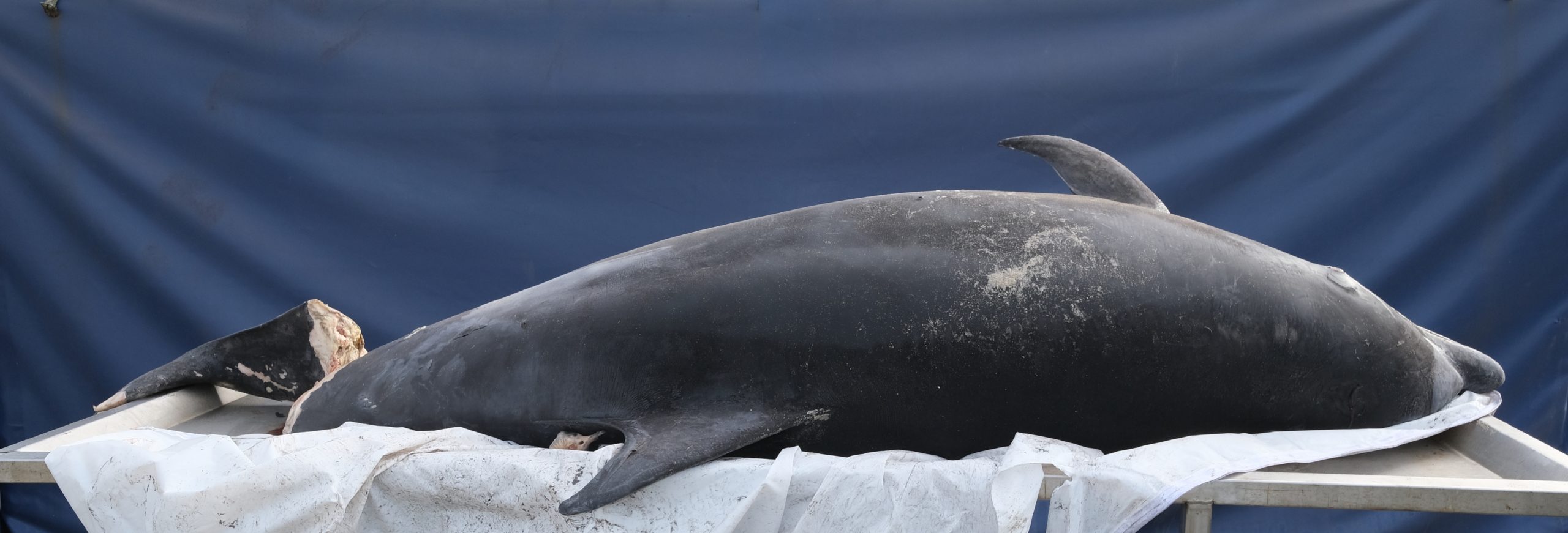In the shadow of the sighting of a carcass of a Fin Whale adrift in the Belgian North Sea on Friday 30 September (later washed up in Westkapelle, The Netherlands), we witnessed another exceptional stranding on Sunday 2 October. Indeed, that day a Bottlenose Dolphin (Tursiops truncatus) washed up on the beach at De Haan.

The animal was initially perceived to be a Harbour Porpoise, only after collection it became clear that it was a Bottlenose Dolphin in an advanced state of decomposition. It was a young male barely 2.24 m long and weighing only 129 kg. Injuries to the tail suggested that the animal came into contact with the propeller of a small vessel. However, the autopsy, conducted at the Faculty of Veterinary Medicine at the University of Liege, could not confirm whether a collision was the cause of death or possibly took place post-mortem. The death could possibly be linked to a starvation process, but the state of decomposition of the cadaver prevented a more complete investigation.


It does not appear to be the Bottlenose Dolphin which is regularly seen in the western part of the Belgian waters, actively seeking human presence there. The Bottlenose Dolphin is native to the southern North Sea but has been very rare there since the 1960s. Since 1995, only two other strandings of Bottlenose Dolphins were recorded in Belgium, in 2016 and 2017.
More information on the occurrence of Bottlenose Dolphins in the North Sea and Belgium can be found in this article.



